SILVANA MOSSANO
Reportage udienza 15 novembre 2021
Paolo Cavallone, casalese, nato nell’autunno del ‘45, morto nell’inverno 2013 per mesotelioma bifasico maligno. Non aveva ancora 68 anni. Un paio in più del fratello Mauro Cavallone, soffocato dallo stesso male otto anni prima. I loro genitori erano stati entrambi operai dell’Eternit e al padre era stata diagnosticata l’asbestosi. All’Eternit aveva lavorato anche lo zio paterno uncinato fatalmente dal mesotelioma quando era un ancor giovane papà di due figli: un maschietto e una bambina di due anni. E pure a una cugina di primo grado dei fratelli Paolo e Mauro, Laura Beltrame, che ha abitato nella vecchia Casale tra Sant’Ilario e l’affaccio sul Ponte del Po, è toccata la stessa sorte, all’età di 72 anni.
Paolo Cavallone è una delle 392 vittime di amianto elencate nel capo di imputazione (così come Mauro) in cui l’imprenditore svizzero Stephan Schmidheiny, ultimo proprietario di Eternit italiana ancor in vita, è chiamato a rispondere, davanti alla Corte d’Assise di Novara, dell’omicidio volontario (con dolo eventuale) di tutti questi innocenti.
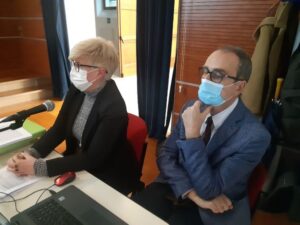
Quello di Paolo Cavallone è uno dei casi a campione che gli anatomopatologi Narciso Mariani e Donata Bellis, consulenti della procura, hanno illustrato nell’udienza del 15 novembre 2021 del processo Eternit Bis, spiegando il percorso e le metodologie seguite per rispondere al quesito posto dai pm. Questa la conclusione: le 392 persone elencate sono morte tutte di mesotelioma. E gli ulteriori accertamenti, affidati dai pm ai consulenti Massimiliano Buggiani e Pavilio Piccioni, pneumologi, e Ferruccio Perrelli, medico del lavoro, hanno confermato che quei mesoteliomi maligni sono stati provocati da esposizione all’amianto sia di tipo lavorativo (62 ex operai dell’Eternit di Casale) sia ambientale (330, tra residenti e famigliari di lavoratori).
Le 392 diagnosi, tutte accomunate da epilogo nefasto, sono state rianalizzate e «revisionate» dagli esperti incaricati dai pubblici ministeri Gianfranco Colace e Mariagiovanna Compare. Un compito complesso e delicato: «E’ difficile, ma comunque possibile – hanno spiegato Mariani e Bellis – effettuare una “diagnosi differenziale” del mesotelioma pleurico, valutando e scartando, cioè, eventuali altre ipotesi patologiche che manifestano sintomi e caratteristiche simili, come ad esempio le metastasi di adenocarcinoma (generalmente dal polmone o dalla mammella) o malattie benigne della pleura». Le placche pleuriche o la pleurite, ad esempio.
Patologie benigne? Può succedere, sì, ma un casalese, che sul referto della radiografia al torace legge la dicitura «versamento pleurico», la primissima immediata «diagnosi differenziale» se la fa già da sé e a tutte le parole che seguono – «bisogna fare ulteriori accertamenti… non precorriamo i tempi… occorre…» – si appiglia come a un ramo secco. La lastra è la cesoia tra il «prima» e il «dopo».
D’altronde, realisticamente, il dottor Massimo Miglietta, che ha testimoniato al processo Eternit Bis il 25 ottobre scorso, in qualità di figlio di una donna morta di mesotelioma, ha detto: «Io sono medico e, in più di trent’anni di professione a Casale, ho visto solo tre casi in cui il versamento pleurico non era mesotelioma».
La conclusione dell’articolato studio affidato agli anatomopatologi (che avevano già lavorato al fianco del dottor Piergiacomo Betta, primario di Anatomopatologia prima a Casale, poi ad Alessandria, ideatore e fondatore della Banca biologica del mesotelioma, una delle prime in Italia) si riassume in questo prospetto: i 392 casi «revisionati» (tenendo conto delle tecniche diagnostiche al tempo della comparsa della malattia, raffrontate con quelle attuali) sono tutti mesoteliomi, di cui 351 con «diagnosi certa» e 41 «probabile». In particolare, 72 diagnosi di «mesotelioma bifasico (63 certi, 3 probabili), 243 di mesotelioma epitelioide (229 certi, 14 probabili), 53 di mesotelioma sarcomatoide (31 certi, 22 probabili).
I tre consulenti Buggiani, Piccioni e Perrelli hanno a loro volta illustrato le conclusioni dei loro approfondimenti in risposta al compito affidato dai pm Colace e Compare: «Esaminata tutta la documentazione inerente i casi di decesso per mesotelioma riscontrati tra la popolazione (residente a Casale e nei paesi limitrofi) e tra ex lavoratori dell’Eternit, dicano i consulenti quali siano state le circostanze di esposizione ad amianto nelle persone in cui è insorto il mesotelioma e se questa malattia sia stata la causa della morte. Inoltre, se l’esposizione all’amianto, a Casale (dove c’era lo stabilimento Eternit) e dintorni, abbia determinato o contribuito a determinare l’insorgenza della malattia e la morte».
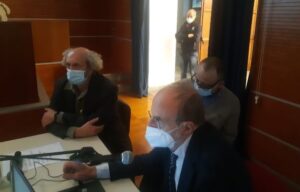
I tre consulenti hanno riferito, sostanzialmente, che esiste proporzionalità tra l’esposizione cumulativa all’amianto e il rischio di nuova diagnosi di mesotelioma di mesotelioma alle persone esposte. E ancora: «fino a induzione completata» non c’è una soglia minima di esposizione alla fibra al di sotto della quale si sia certi che l’esposizione non contribuisca alla formazione del mesotelioma. Che cosa significa? L’«induzione» è il tempo che intercorre tra l’inizio del processo di cancerogenesi e il momento in cui il tumore si insedia nel corpo in modo silente, irreversibile e non ancora rilevabile (né attraverso sintomi né con indagini diagnostiche). In questo lasso temporale, non c’è una soglia-rischio di esposizione che possa essere ritenuta «irrilevante», anche se minima. Comunque, né il momento dell’inizio del processo di cancerogenesi né il momento dell’avvenuta induzione sono determinabili. Dal momento dell’avvenuta «induzione», invece, fino alla comparsa dei sintomi (e successiva diagnosi) le esposizioni perdono di rilevanza.
Hanno anche aggiunto che, pur non essendoci soglia minima che escluda il rischio, «le esposizioni più elevate si traducono in anticipazione della malattia e in un maggior numero di anni di vita perduti».
L’esame dei 392 casi ha evidenziato, come si evince dalla relazione dei consulenti della procura, che 62 erano lavoratori dell’Eternit, ma anche residenti a Casale o nei dintorni, tranne una persona che era addetta alla preparazione degli ordini dell’azienda nelle sedi di Novara e di Milano. Dei deceduti «lavorativi» nell’arco compreso tra il 1991 e il 2014, il più giovane aveva 42 anni, il più anziano 81.
Gli altri 330 hanno subito esposizioni non lavorative – ambientali o familiari -; di questi, 220 hanno sempre abitato solo a Casale, 92 sia a Casale che nei paesi limitrofi, e 18 soltanto nei paesi limitrofi. Uno, in realtà, non era propriamente abitante a Casale, ma vi ha passato buona parte della vita, perché è stato prima studente e poi insegnante in scuole cittadine e un altro ha trascorso per molti anni le vacanze in una casa di Frassinello Monferrato (a una dozzina di chilometri da Casale), dove tra l’altro erano presenti polverino e manufatti di eternit. Dei casi non lavorativi, con diagnosi effettuate tra il 1990 e il 2016, il più giovane (anzi, la più giovane) aveva 36 anni, il più anziano 96.
Ulteriore precisazione dei consulenti: «Non importa se il mesotelioma si è manifestato come pleurico o peritoneale: tutti quelli da noi presi in considerazione sono dovuti a esposizione all’amianto».
LA STORIA DEI FRATELLI PAOLO E MAURO
Paolo Cavallone è tra i 220 che hanno sempre vissuto a Casale, tra le case abbracciate l’una all’altra e affacciate su un reticolo di strade in vista dello stabilimento Eternit di via Oggero, qualche decina di metri in linea d’aria. E così pure il fratello Mauro. Il quartiere si chiama Ronzone, con una appendice che prende il nome di Rotondino. Sentivano l’orgoglio di essere «ronzon-rotondinesi».
I genitori e lo zio avevano lavorato all’Eternit, a due passi da casa, più comodo di così. Paolo no, non ci ha lavorato, e neppure Mauro. Si sono dedicati ad altre professioni, tra loro condivise così come l’affetto fraterno e la confidenza che li univa profondamente. Ogni mattina uscendo e ogni sera tornando, la fabbrica la vedevano lì, pachiderma grigio, polveroso e talvolta sbuffante, a loro estranea, ma presenza vicina quasi «sul sapè (l’ingresso, ndr) di casa».
Prosegue la ricostruzione dagli anatomopatologi. A marzo 2012, lamentando un dolore toracico, ha fatto la radiografia: di rito, viene da dire, per chi vive qui. Esito: versamento pleurico monolaterale. La corposa scheda dei consulenti riassume i vari passaggi: la Tac definisce il versamento «discreto» ed evidenzia «ispessimenti». Dopo un ricovero all’ospedale Santo Spirito, in cui è sottoposto a toracoscopia, esami citologici e istologici, Paolo Cavallone viene dimesso ad aprile con la diagnosi di «neoplasia pleurica destra», più precisamente «mesotelioma bifasico maligno». Prima dell’estate e poi in autunno, fa cicli di chemio, a ottobre viene eseguito il talcaggio per cercare di contenere il disagio della formazione di liquido, ma la situazione non migliora, anzi. Muore il 26 gennaio 2013.
Quel che non racconta la scheda è che Paolo, dalla comparsa di quel dolore toracico, aveva già capito e previsto tutto. Anzi, ci si era già specchiato, perché, a ottobre 2004, al fratello maggiore era stata fatta la stessa diagnosi. Lo aveva affiancato, accompagnato, consolato fino all’inesorabile distacco avvenuto la mattina del 25 maggio 2005: Mauro Cavallone si era sfilato gli occhiali, li aveva posati sul comodino e aveva calato le palpebre. Neppure Mauro, fatta la diagnosi, si era illuso. «Siamo come lo yogurt – aveva detto -: ognuno con una propria data di scadenza». A 66 anni era scritta la sua, pochi mesi prima che nascesse il suo nipotino.
QUESTIONE SOLLEVATA DALLA DIFESA
L’avvocato Guido Carlo Alleva, difensore, con Astolfo Di Amato, dell’imputato Stephan Schmidheiny, ha sollevato, meglio: risollevato, una questione: «Riguarda il tema dei “vetrini”» ha spiegato, ribadendone l’inutilizzabilità (e invece citati nella relazione degli anatomopatologi) poiché «i nostri consulenti non sono stati messi nelle condizioni, prima dell’inizio del processo, di esaminare il materiale biologico dei 392 casi». Alla prossima udienza, alle lagnanze della difesa replicheranno i pm.
Lunedì 22 novembre, si svolgerà anche il controesame, da parte dei legali di parte civile e di difesa, dei cinque consulenti sentiti il 15 novembre.
CALENDARIO UDIENZE DEL 2022
Queste le date concordate fino a Pasqua: 10, 17, 24 e 31 gennaio 2022; 9, 14, 21 febbraio; 2, 7, 16, 21 e 28 marzo; 4 e 11 aprile. Tra le udienze già fissate per dicembre 2021, è stata annullata quella di mercoledì 10 (restano il 6, 13 e 20).
Traduzione a cura di Vicky Franzinetti
Translation by Vicky Franzinetti
November the 15th 2021 hearing
by SILVANA MOSSANO
Paolo Cavallone, from Casale, born in the Autumn of 1945, died in the Winter of 2013 killed by malignant biphasic mesothelioma. He was not yet 68 years old. He was a couple of years older than his brother Mauro Cavallone, who had died of the same disease eight years before. Their parents had both been Eternit workers and their father had been diagnosed with asbestosis. His paternal uncle had also worked at Eternit, killed by mesothelioma when he was the father of two young children: a boy and a two-year-old girl. A first cousin of the brothers Paolo and Mauro, and their sister Laura Beltrame, who lived in the old Casale between Sant’Ilario and the Bridge on the River Po, also suffered the same fate at the age of 72.
Paolo Cavallone is one of the 392 asbestos victims listed in the charges (as well as Mauro) the Swiss entrepreneur Stephan Schmidheiny, the last surviving owner of Italian Eternit, is called to answer, before the Court of Assizes of Novara, for the voluntary murder (with possible wilfulness) of all these innocent victims.
Paolo Cavallone is one of the cases that pathologists Narciso Mariani and Donata Bellis, expert witnesses for the prosecution illustrated in the hearing of November the 15th , 2021 of the Eternit Bis trial, explaining the methods followed (…). The conclusion is quite clear: the 392 people listed all died of mesothelioma. Further investigations were carried out by the Prosecution’s expert witnesses, consultants, pneumologists (lung specialists), Drs Massimiliano Buggiani and Pavilio Piccioni, and occupational physician Dr Ferruccio Perrelli, confirmed that those malignant mesotheliomas were caused by exposure to asbestos both occupational (62 former Casale Eternit workers) and environmental (330, including members of the community and family members of workers).
The 392 diagnoses, all of which fatal cases, were reanalyzed and “reviewed” by the experts appointed by the prosecutors Drs Gianfranco Colace and Mariagiovanna Compare. A complex and delicate task: “It is difficult, but still possible – Mariani and Bellis explained – to have a “differential diagnosis” of pleural mesothelioma, reviewing and considering all other pathologies that can give similar symptoms and characteristics, such as adenocarcinoma metastases (usually from the lung or breast) or benign diseases of the pleura”. Pleural plaques or pleurisy, for example.
Benign diseases? It can happen, why not, but a person from Casale, who read and still reads the wording “pleural effusion” on the report of the chest X-ray, makes a very immediate “differential diagnosis” and to all the words that follow – “further investigations must be done… let’s not rush things… it is necessary…” – people cling as if to a branch in a flood. -. The X-ray is a watershed, it divides your life into before and after.
On the other hand, realistically, Dr. Massimo Miglietta, who testified at the Eternit Bis trial on October 25, as the son of a woman who died of mesothelioma, said: “I am a doctor and, in more than thirty years of profession in Casale, I have seen only three cases where the pleural effusion was not due to mesothelioma”. The conclusion of the comprehensive study performed by the pathologists (who had already worked alongside Dr. Piergiacomo Betta, head of Pathology first in Casale, then in Alessandria, creator and founder of the Biological Bank of Mesothelioma, one of the first in Italy) can be summarized as follows: 392 cases “reviewed” (taking into account the diagnostic techniques at the time of the appearance of the disease, compared with current ones) are all mesotheliomas, 351 of which with “certain diagnosis” and 41 “probable”. In particular, 72 diagnoses of “biphasic mesothelioma (63 certain, 3 probable), 243 of epithelioid mesothelioma (229 certain, 14 probable), 53 of sarcomatoid mesothelioma (31 certain, 22 probable).
One after the other, the three consultants, Drs Buggiani, Piccioni and Perrelli, illustrated the conclusions of their investigations, answering the questions the two Prosecutors Colace and Compare had asked them to address (…). “After examining all the evidence concerning the cases of mesothelioma deaths in the community (resident in Casale and in the neighbouring towns) and among former Eternit workers, can the consultants state the circumstances of exposure to asbestos in mesothelioma victims and whether the disease was the cause of death. In addition, whether exposure to asbestos, in Casale (where the Eternit plant was) and surroundings, determined or contributed to the onset of the disease and death.”
The three consultants concluded that basically there is proportional relation between cumulative exposure to asbestos and the risk of mesothelioma in exposed persons. And again, “until induction is complete” there is no minimum threshold of exposure to the fibre below which one is certain that exposure does not contribute to development of mesothelioma. What does this mean? “Induction” is the time that elapses between the beginning of the process of carcinogenesis and the moment in which the cancer develops silently in the body, irreversibly and not yet detectable (neither through symptoms nor with diagnostic investigations).This is the time frame, there is no irrelevant, threshold that can be considered risk free however minimal it is”. However, neither the time of initiation of carcinogenesis nor the time of induction can be determined. Instead, from the time of “induction” until the onset of symptoms (and subsequent diagnosis), exposures are less relevant. They also added that while there is no minimum threshold that excludes risk, “higher exposures result in earlier development of the disease and thus losing more years [of life].”
As can be seen from the report of the prosecutor’s expert witnesses, the examination of the 392 cases showed that 62 were Eternit workers, but also members of the community in Casale or the surrounding area, except for one person who was in charge of preparing the company’s orders in the offices of Novara and Milan and from 1991 to 2014, the youngest was 42 years old, the oldest 81. The other 330 suffered non-occupational – environmental or domestic – exposures; of these, 220 had always lived only in Casale, 92 in both Casale and neighbouring towns, and 18 only in neighbouring towns. One of them did not actually live in Casale, but had spent a good part of his life there, because he was a student and then a teacher in the town’s schools. Another one spent his vacations for many years in a house in Frassinello Monferrato (a dozen kilometres from Casale), where, among other things, there was dust and Eternit artefacts. Of these cases, diagnosed between 1990 and 2016, the youngest was only 36 years old, the oldest 96.
The consultants concluded: “It does not matter whether the mesothelioma occurred as pleural or peritoneal: all those we considered were due to exposure to asbestos.”
THE STORY OF TWO BROTHERS: PAOLO AND MAURO
Paolo Cavallone is among the 220 people who have always lived in Casale, among the houses one next to the other overlooking a network of streets in view of the Eternit plant in Via Oggero, a few dozen meters away. And so does his brother Mauro. The neighbourhood is called Ronzone, with an appendage called Rotondino. They were proud to be “ronzon-rotondinesi” the nickname of those born and bred in the district. Their parents and uncle had worked at Eternit, just a stone’s throw from their home, very convenient. Paolo did not work there, nor did Mauro. They dedicated themselves to other professions, which they shared as well as being brothers. Every morning they walked out and every evening as they walked back, they saw the factory there, a grey, dusty and sometimes like a huffing elephant, a stranger to them, but a presence “on the sapè (the threshold) of the house”.
The reconstruction by the pathologists continued. In March 2012, complaining of chest pain, he had an X-ray: a ritual, you might say, for those who live here. Result: unilateral pleural effusion. The consultants’ thick sheet summarized the various steps: the CT scan defined the effusion as “substantial” and highlighted “a thickening“. After being admitted to the Santo Spirito Hospital, where he underwent a thoracoscopy, cytological and histological tests, Paolo Cavallone was discharged in April with the diagnosis of right pleural neoplasm, more precisely malignant biphasic mesothelioma. Before the summer and then in the Autumn, he had chemo, in October a talcage was performed to try and contain the discomfort due to the accumulation of the liquid, but the situation did not improve. He died on January 26, 2013.
What the medical report does not tell us is that, ever since he developed that chest pain, Paolo had understood and predicted the outcome step by step. Indeed, he had already seen himself in his older brother who had received the same diagnosis in October 2004. He had helped his brother, accompanied him, consoled him until the time of his expected death on the morning of May 25, 2005 when Mauro Cavallone took off his glasses, placed them on the bedside table closing his eyes forever. Mauro had been under no illusion. “We are like yogurt – he had said – each with its own best before date“. At 66 years old, his best before date, a few months before his first grandson was born.
OBJECTIONS RAISED BY THE DEFENSE
Defence lawyers Guido Carlo Alleva, and Astolfo Di Amato, raised an objection: “It concerns the issue of the slides he explained, stressing they couldn’t be used (…) because “our experts were not given the opportunity to examine the biological material of the 392 cases before the beginning of the trial “. At the next hearing, the Prosecution will answer their objections.
On Monday, November 22, the plaintiffs’ lawyers and the defence lawyers will cross-examine the five consultants heard on November 15.
2022 HEARINGS
These are the dates agreed until Easter: January 10, 17, 24 and 31, 2022; February 9, 14 and 21; March 2, 7, 16, 21 and 28; and April 4 and 11. Among the hearings already scheduled for December 2021, the one on Wednesday the 10th has been cancelled leaving the 6th, 13th and 20th.

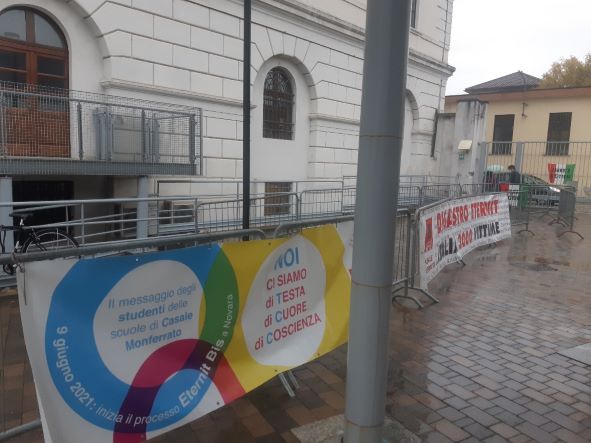

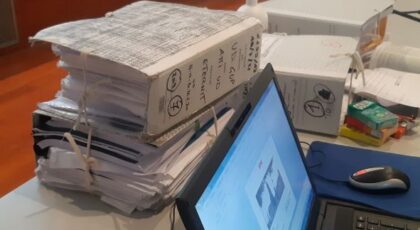

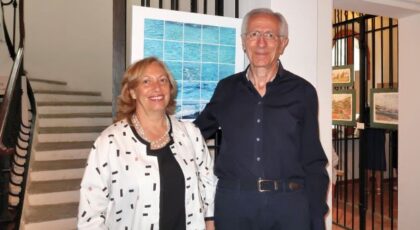
Continua l’analisi completa e complessa di questo difficilissimo processo a semplice solo se si pensa ai defunti che tutti noi ricordiamo e onoriamo. Purtroppo questa è “la
Legge” o la riformiamo completamente e ripeto completamente a cominciare da chi esercita questa professione diversamente finisce tutto come sempre “ dalla parte del più forte economicamente.” Grazie
Mille grazie Silvana per la puntualità e continuità di questo impegno, molto utile oggi e domani.